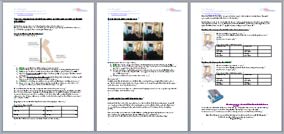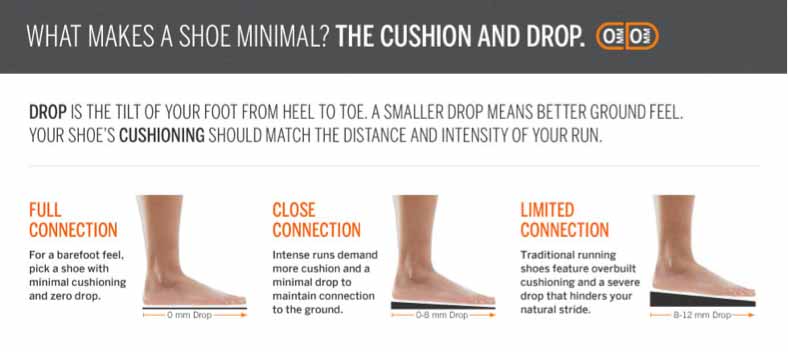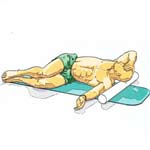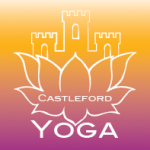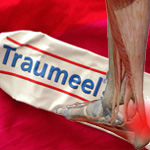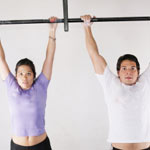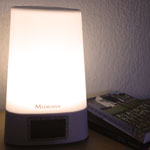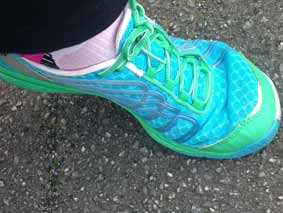 You have probably seen and heard of minimalist trainers or barefoot shoes. They have been around for a while now. I’d like to explain to you why wearing barefoot shoes is not just a trend or fad, but something that you should explore for yourself if you care for the health of your feet and anything that lives above them i.e. ankles, knees, hips and spine. Every structure of your body depends on the base – i.e. your feet need to be as healthy and functional as possible.
You have probably seen and heard of minimalist trainers or barefoot shoes. They have been around for a while now. I’d like to explain to you why wearing barefoot shoes is not just a trend or fad, but something that you should explore for yourself if you care for the health of your feet and anything that lives above them i.e. ankles, knees, hips and spine. Every structure of your body depends on the base – i.e. your feet need to be as healthy and functional as possible.
All of us have made some bad shoe choices at some point in our life. For some it has greater repercussions than just brief foot pain and blisters.
Let’s get to the point: looking at the different factors that need to be considered when choosing shoes for activity and fitness in particular, although this post should give you enough food for thought to also re-think how you treat your feet outside the gym.
Why running shoes are not suitable for weightlifting classes like Body Pump
Have you ever noticed that your body weight shifts uncontrollably over your base of support – your feet – that have been parked in running shoes?
Maybe you hear the instructor calling out cues like “drive through the heels to activate your glutes and hamstrings” but when you try to implement the instruction it seems impossible?
Your knees dangerously sway in and out?
Have you had sore muscles around the ankles, outside of the knee or thigh after a workout? Those muscles have to work overtime trying to stabilise your body on the wobbly, squishy running shoe soles.
Yes, stability also depends on a functioning core; you have already learned that good looking and functioning abs are not achieved with crunches.
All joints above the foot can be affected by the health and function of your feet.
How you lose power
Think for a moment, when you stand on the beach in the soft sand and you are trying to exert power through your legs pushing into the unstable surface, you will notice that it is much harder than when you are standing on a solid ground. Your foot reads the situation of what is underneath you and sends the information through your nervous system to the brain which then sends a response for an appropriate response of the muscles to keep you safe.
To move the body forward or upward we need to push against the floor, if we then add a soft asymmetric running shoe sole in between us and the ground, we lose quite a lot of muscle power by the dampening effect that the running shoe has been designed to provide.
The thick soles also confuse the brain as it has to not only calculate what the ground is like, but what influence the sole of the shoes has on the situation and how to organise the body above your feet.
Another thing to consider is that the running shoe has a raised sole at the heel that tapers to the front/ big toes area, this asymmetric cushioning causes the calf muscles to shorten just like when wearing high-heeled shoes on a regular basis. So men be ware it can happen to you too!

It’s not your fault that your squat is bad.
Tight calves can make your squat form a health hazard, whether you are doing them in running shoes or not. The shortened calf muscles may force you to lift the heels, even when you are just trying to get your butt to a 90degree -knee level.
You ‘ll feel your body weight shifting forward; then you start pushing through your forefoot using predominantly your quads/ front of thigh muscles rather than your lovely glutes that I am sure you came to train.
In this position you may also feel a lot more pressure under the kneecap than is necessary. It does not matter whether you have a huge space of air under your heel or if you only take the body weight of the heels; both positions cheat you out of getting your butt shaped and strong.
There is another implication on the lumbar spine/ lower back, to be able to balance the body over the feet when the heels are up. Most people start curling the tailbone under. Rounding the lower back is asking for a disc bulge to trap a nerve, especially when this movement pattern becomes imprinted and you start loading up with weight. Heavy weight puts extra pressure on the already compressed, flexed lumbar spine that can not be supported by the lower back muscles or the corset muscles which function best when the spine is in neutral.
You need your glutes to be able to do their job if you want to keep your lower back pain free and healthy.
Know someone who could do with this information? Share it with them and save them the pain.
Take the free self test and guide to improving your calf health
I have prepared a guide with instructions for 2 self tests to check how tight your calves are. The document also includes a guide on which stretches to choose and how often and long to stretch for, to get improvement quickly. Take the challenge and improve your squat, avoid injury, plantar fasciitis and chronic foot pain.
Click here to claim your Free guide
Why fancy toning shoes like Reebok Easytone, Skechers Shape-Ups do not belong in the gym or any other dynamic sport activity
They are even less stable than running shoes with their asymmetric – wobble triggering sole design. That is just asking for a twisted ankle when bouncing around in an Attack or Body Combat class. Even just performing dynamic lunges can cost you your ACL or MCL or ankle ligaments. I have seen people wear toning shoes and struggling to keep their balance (And this was NOT in the gym!). I was frightened for their health.
You may have looked at getting shoes with arch support to address your pronating feet, foot pain, plantar fasciitis, achilles tendon problems, shin splints or knee pain.
What you need to take into consideration is what your core function is like, do you suffer from inflammation of any organs (known or un-known). You have read the article about why crunches don’t work, I explain the relationship of muscle function and organ health. You body will not sacrifice an organ to save your ankle or knee. You can live without a limb, but not without functioning organs.
Generally, using a band-aid like an orthotic insole or a support shoe will mask the actual problem. The support can make your foot feel better but it may force the problem further up the body into another joint causing pain there (i.e. knee, hip, lower back, SI joints or even the neck). You would probably not think that a new pain issue could be related to having chosen an arch support.
A brace or support for any area of the body causes the muscles to get weaker and loose their function because they are no longer able to do their job as intended by nature.
Your arch is a natural suspension system – keep using it or you’ll loose it!
How to choose a shoe that is as FIT as you are
So, we have learned that less support and cushioning encourages better health and muscle function from head to toe.
I suggest you try a variety of brands and models of minimalist shoes before you decide on one.
Also watch out, some stores that stock the shoes do not stock half-sizes. I had to send my shoes back because I felt I needed a half size smaller than what I got. Your minimalist shoes need to fit like a 2nd skin.
Why not go barefoot instead?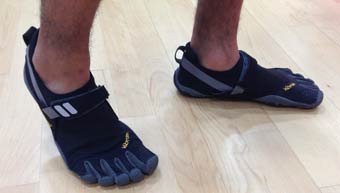
Ideally, we would have non-tarmacked walk ways and would go barefoot wherever possible. However, there is a problem with going barefoot. You might want to bear in mind the potential of stepping into something sharp or picking up a parasite that digs itself through your skin.
So the next best thing to au-natural would be a five finger Vibram shoe that is like a second skin protecting your feet from stones and other potential puncture hazards. This type of shoe still give you all the feedback you need to manoeuvre your body well.
You’ll have to go into a shop that sells them to try the five fingers on – they don’t work for everyone. I have very long toes and did not find that they worked for me when I tried them on when they first became available many years ago.
I have settled for an alternative, a minimalist zero drop shoe with only 4mm of cushioning called the Barefoot-Run-Road-Glove-Dash-2 from Merrell. I also like my Adidas Climacool Boat Lace shoes. They are nice and level to the ground, have extra venting in the sole, so you can wear them when you go off for canoeing and stand up paddling or any other water sport. The venting is a real bonus since many of us spend a lot of time in shoes, it is nice to know that there is air coming in helping to prevent stinky feet.
Where to try different options
Depending on the shape of your foot, another brand may work better for you.
Outdoor shops like Cotswold and Blacks stock some minimalist/ barefoot shoes.
Make sure that you try them on with socks you are intending to wear with those shoes. Check that the shoe fits like a second skin in width and that there is a small amount of space (around 0.5cm) in front of the big toes. Shoes that are too short can cost you your toe nail – ouch!
Different brands have different sole flexibility even between models, check which one feels good when you have them on. You may want to start with a shoe that has a slightly lower heel drop than your current and then work your way down to a zero drop flat shoe letting the foot develop it’s natural springiness again.
If you have a high arched foot, it is likely to be quite ridgid, your foot will love to have a more flexible shoe.
Maybe your foot is more floppy and over-pronates, you want to give it a little more support with a stiffer sole but still minimalist. In some cases it is good to wear high quality orthotics whilst the problem is addressed body wide.
An assessment of why your foot is pronating is essential, you need to find out if your foot is a structural flat foot or a functional one?
How is your gut, eye, ear, tooth and upper cervical spine health, any issues in these areas can cause pronation and foot problems that will not resolve unless the driver of the problem is addressed. A CHEK trained coach such as myself can help you establish how best to address the pronation.
Do your research off-line and online and then get the perfect pair in your favourite colour- if you can afford them 😉
Once you got the new shoes, start wearing them only for short periods of time walking around the house. I do not suggest going straight into your usual fitness class or running activity without training your feet up for the new work they will have to do. Take it slow!
Difference between zero drop and a normal running shoe
Have a look at the image below. It explains what the “drop” is:
This is info on how to transition into a minimalist shoe for running
- Merrell education – What is zero drop and much more.
- Vibram education and transition All about getting started and re-educating your feet.
- Vibram soles chart Different soles for each application.
If you are still desperate to be a runner, check out this awesome resource on Chi running. Stay safe!
Barefoot shoe brands:
- vibrams
- zemgear
- vivo barefoot
- inov-8
- gost-barefoots
- adidas climacool boat shoes
- new balance minimus
- Skora
Note: the list is by no means exhaustive.
Let me know how you get on with the self testing and getting new shoes. Fancy sending in your calf tension test pic?
I am curious how you will feel once you have transitioned.
If you need any further support, you know how to get in touch, I love to hear from you.

